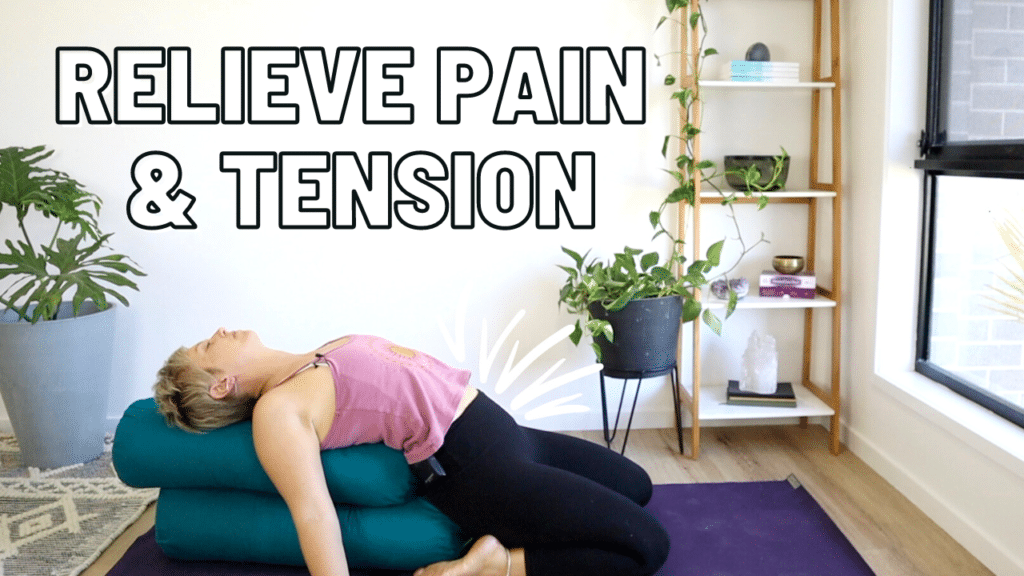Yoga for endometriosis – these poses will relieve pelvic pain
Endometriosis is a chronic inflammatory condition where tissue (similar to the lining of the uterus), grows outside the uterus. While the physical symptoms will differ for every woman, Endometriosis commonly causes severe period pain and creates difficulty conceiving. This is where yoga for endometriosis can help!
While 1 in 10 women experience endometriosis, the exact cause of this condition is still unclear. We do know that certain risk factors increase your chance of having endometriosis including; family history, heavy or long periods, short cycles and getting your first period early.
How yoga for endometriosis can help?
- Yoga helps relieve the pelvic pain associated with endometriosis
- Yoga helps relieve to stress (which in turn can help balance hormones, relieve inflammation and restore the immune system – all associated with endometriosis.)
- Yoga helps to address the emotional aspects of endometriosis
- Yoga helps us to reconnect to spaces in the body that we become disconnected from when pain is involved. While it may feel counterintuitive, connecting with these areas of the body is an important step towards relieving pain.
Symptoms of Endometriosis
- painful periods
- pain during or after sex
- constipation or diarrhoea
- heavy periods with or without clots
- prolonged periods
- pain in the back or pelvis
- fatigue
- bleeding between perids
- some women have no symptoms at all and the first they know of their endometriosis is during fertility investigations
How is endometriosis treated?
- Endometriosis is often treated surgically by removing the endometrial tissue. Although this does not cure the condition and many women find their symptoms return with time.
- Alternatively, women may be offered pain management like ibuprofen or the hormonal pill, which masks symptoms but does not treat them.
- Lifestyle changes that reduce inflammation and help to balance hormones are needed to ease symptoms long term. (Yoga for endometriosis can be a part of these lifestyle changes!)
What not to do when practicing yoga with endometriosis
- Avoid a strong vinyasa practice (this creates too much heat and tension in the belly which can make pelvic pain worse).
- Don’t practice too soon after abdominal surgery. It’s important to take the time you need to heal. Talk to your doctor before practicing yoga after abdominal surgery for endometriosis.
- Avoid compressing the belly in poses where you lay on the belly or twist into your leg (open twists are okay).
6 yoga poses for endometriosis and pelvic pain
If you’ve been suffering from Endometriosis, try these yoga poses to help relieve your symptoms (or practice along with the video at the end of this post).
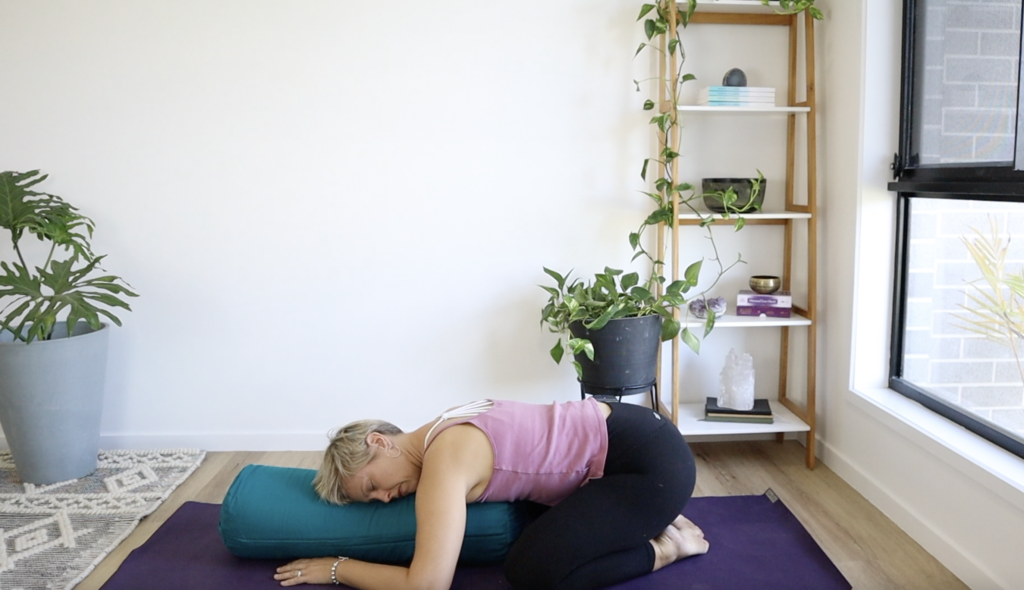
Childs Pose
Bring the knees wide and sit back towards the heels. Use a bolster under the chest to support the upper body to relax. Focus on softening the belly and sinking into the supports beneath you.
Benefits: Child’s pose helps you to tune into what you’re feeling in your body. This pose allows you to completely soften the belly which can help to relieve cramping and tension.
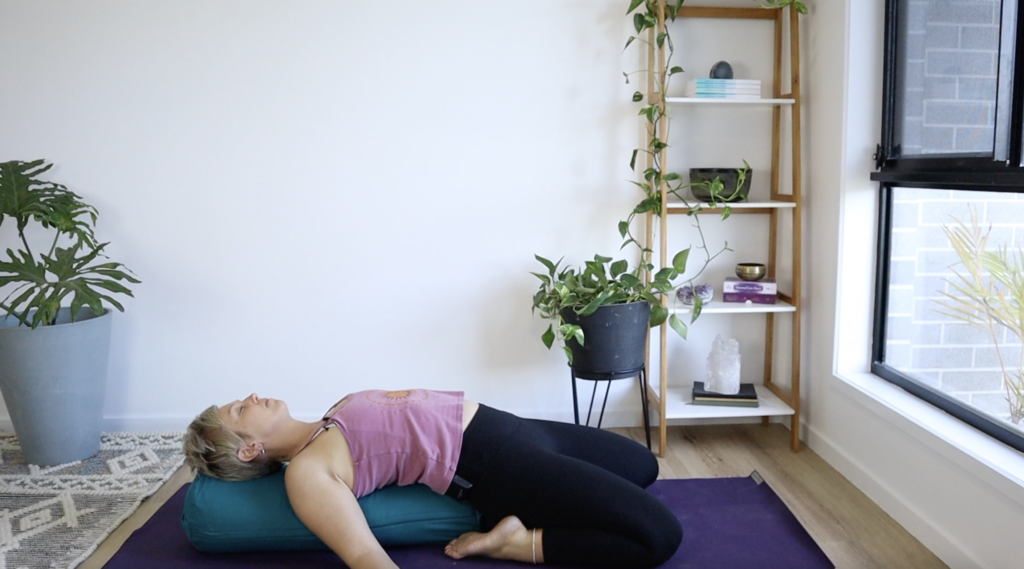
Supported hero pose
Come to sit between the feet in a kneeling position. Bring a bolster in behind the tailbone to support the back, and lower yourself onto the bolster. Allow the chest and shoulders to soften. (If this is too intense for the hips and belly, bring an additional bolster in underneath the back).
Benefits: Supported hero stretches into the belly and pelvis. This pose can help relieve bloating and cramping.
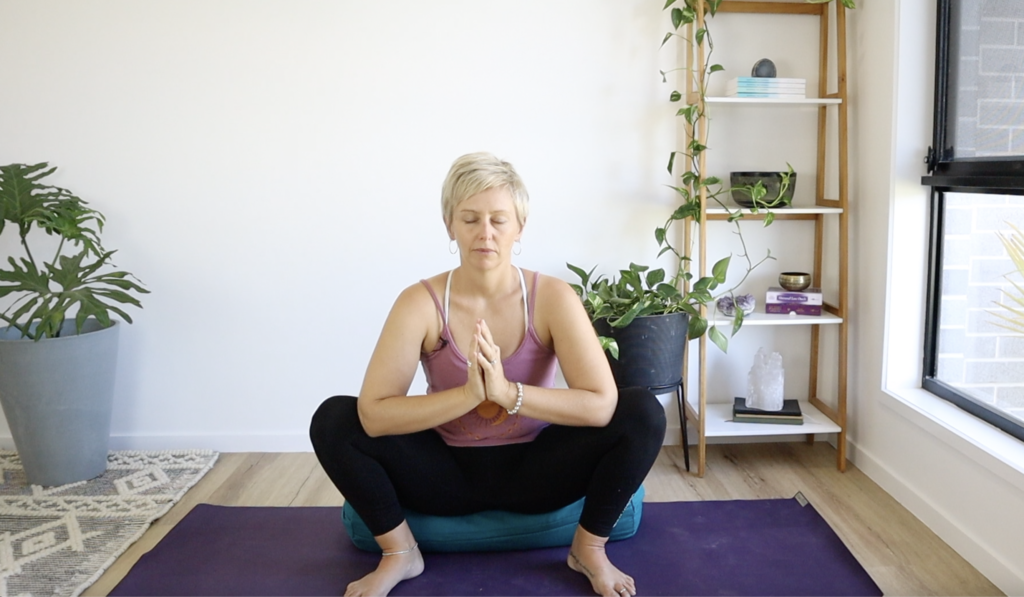
Supported malasana
Bring yourself to sit on a bolster with the feet wider than hip distance. Let the knees fall out and bring the elbows to the inside of the knees. Breathe in and lengthen your spine. As you exhale gently press your elbows into the legs and squeeze the legs into the elbows. Let your belly and pelvic floor be soft.
Benefits: Supported malasana helps to relieve lower back pain and cramping. It can also help improve digestion, which is commonly an issue for women with endometriosis.
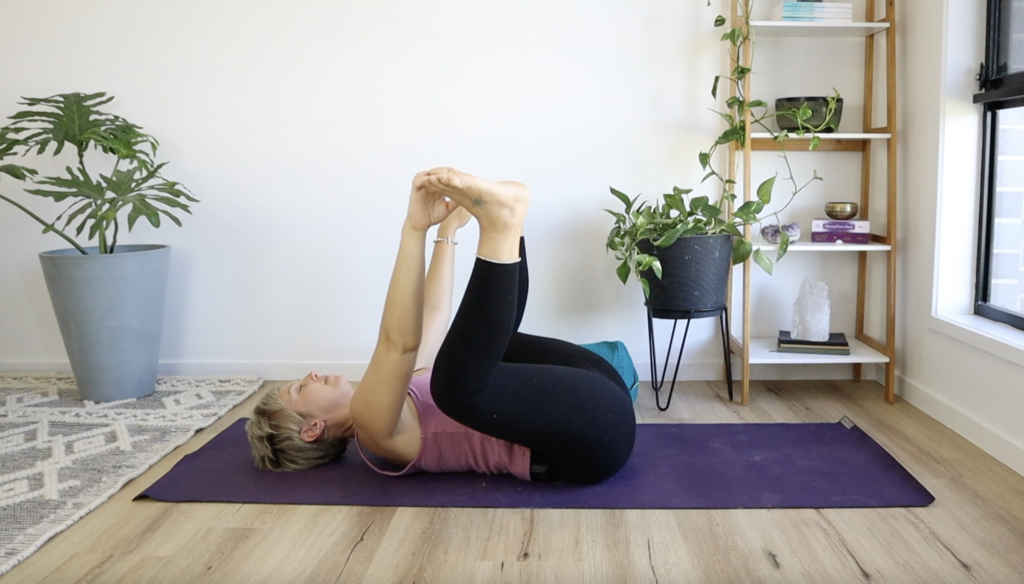
Happy baby
Lie on your back and reach your hands towards your feet, shins or thighs. Gently draw the knees down towards your armpits. Let your shoulders and face soften. Gently rock from side to side or find stillness if you prefer.
Benefits: Happy baby pose helps to relieve tension in the pelvic floor, thighs and hamstrings. These spaces in the body are typically tight in women who have endometriosis, as they tense them to compensate for the pain.
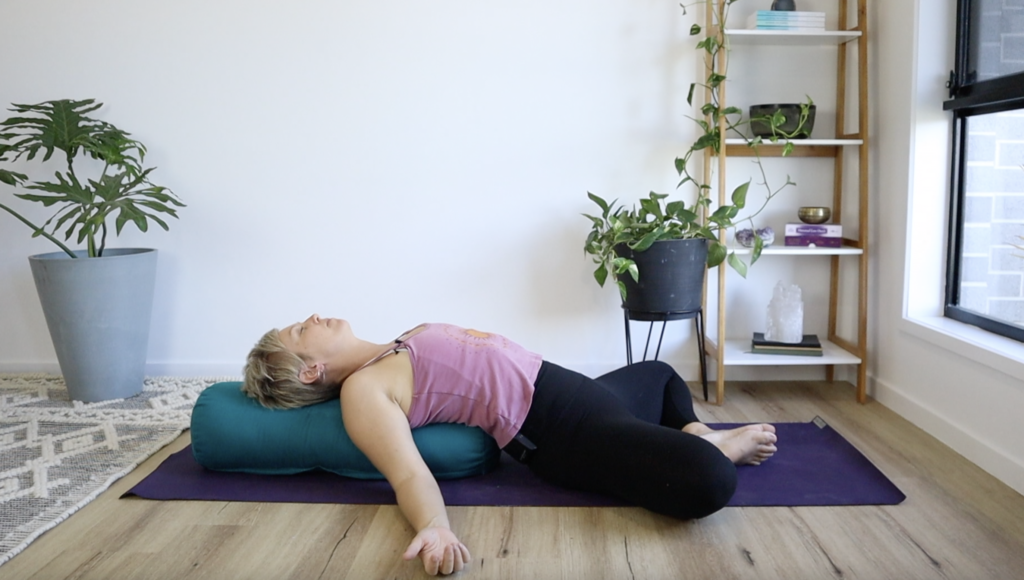
Supported Supine Butterfly
From a seated position, bring the bolster in behind you to support your back. Bring the soles of your feet in towards each other as you let the knees fall out to the sides. Gently soften your torso and head into the bolster. Close down the eyes and let yourself rest.
Benefits: Supported supine butterfly helps to relieve tension in the pelvis and abdomen. This pose is an excellent position to connect inwards and practice breath work to help relieve pain.
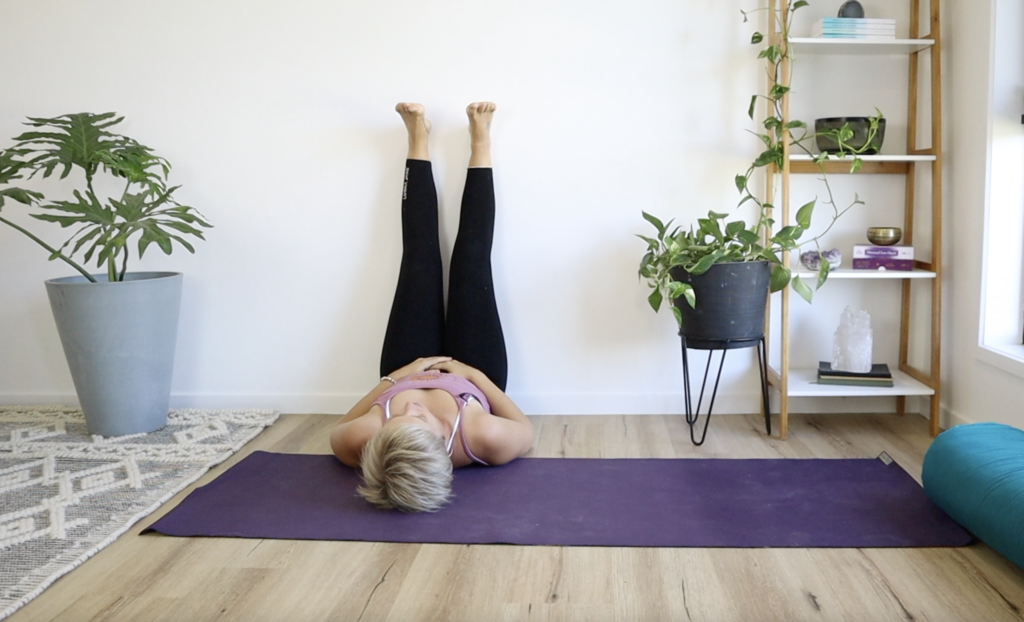
Legs up the wall
Come to sit against the wall with one hip resting on the wall. Swing your legs up the wall as you come to lie down. Gently draw your toes back towards you as you press your legs into the wall. Breathe fully and deeply into your belly as you soften into this position.
Benefits: Legs up the wall helps to relieve cramping and tension. It is also helps to improve circulation and reduce stagnation (all of which can help endometriosis symptoms).
It’s time to get comfortable and practice this yoga for endometriosis class below. If you’re brand new to fertility yoga, download my free fertility yoga guide here.
If you’re a yoga teaching looking to teach yoga specifically for fertility or menstrual symptoms, check out my fertility yoga teacher training here.

